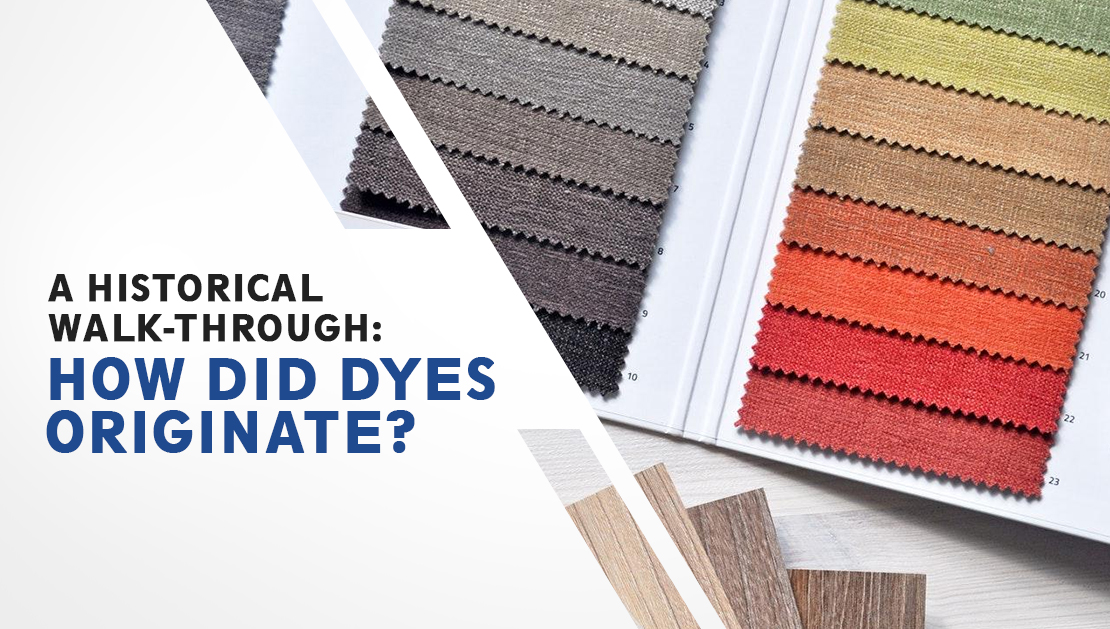The history of humankind and dyes has been a long one. We have been fascinated with colors for a range of social, religious, as well as aesthetic reasons. Today, dyes on textiles are widely in use in a variety of different businesses. Dyes have also been embraced by many industries to reduce overhead costs and make the most out of existing business materials.
Not only do dyes impart color but also add a dimension of perspective to the items they are used on. Let’s look at how dyes originated in history.
The Origin of Dyes
Dyes came into existence thousands of years ago. Evidence shows that the use of textile dyeing can be traced back to the Neolithic period; which was around 10,200 BCE. Some of the other recorded uses of dyes in history are:
- Dyed fabrics dating
back to over 4000 years ago were found in Egyptian tombs - Use of black, yellow,
white, and reddish pigments made from ochre can be found in cave paintings from
as early as 15,000 BCE - Use of dyes has also
been documented between 7200-2000 BCE, the period of development of fixed
settlements and textiles
What are Natural Dyes?
Initially, all dyes were derived from sources found in nature. These could be plants, trees, insects, vegetables, and other similar sources. Until the 1850s, natural dyes were heavily relied on. Some of the natural dyes used were:
Indigo
Indigo is among the oldest known natural dyes. Leaves of the indigo plant (Indigofera tinctoria) were used to derive this dye.
Alizarin
This was a red dye that was created from the madder plant. Other shades of red were created by using scale insects like kermes and cochineal.
Tyrian Purple
Tyrian purple was one of the dyes reserved for people in power, high office, or royalty. It was extracted from the glands of snails.
Yellow
Yellow was extracted from the leaves of plants like weld, quercetin, and the bark of North American oak trees. They contained compounds called carotenoids that produced hues from yellow to red.
Logwood
Logwood is the only natural dye still being used today. This dye is red but after combining with chromium, it turns into charcoal, gray, and black. It is used to dye silk and leather.
Mordants
For most natural dyes, the direct application was not possible for fabrics, materials, or textiles. As a result, they had to be pre-treated with inorganic salts called mordants. Mordants help dyes to stick to different mediums and some of the commonly used ones were aluminum, copper, iron, and chrome. These were also helpful to achieve a certain shade or tint of specific colors.
The Advent of the Synthetic Dyes
As the industrial revolution was in full swing, the textile industry was thriving and the need for cost-effective, convenient, and readily available dyes rose. As a result, the use of natural dyes started declining and synthetic dyes started taking over during the 1850s. Natural dyes were more difficult, expensive, and more time consuming to produce.
Another factor that paved the way for the development of synthetic dyes was the study of coal and tar. Coal tar was gaining a lot of attention from chemists as it was a source of new organic compounds. One of the leading researchers, William H. Perkin, discovered the first synthetic dye called mauve. Perkin’s discovery led to the rise of synthetic dye development and the gradual shift from natural to synthetic dyes.
By 1900, over 50 compounds had been isolated from coal tar and most of them were used in the German chemical industry. Synthetic dyes are still commonly used by a wide range of industries. Through continuous research and development efforts, the production of synthetic dyes became more sustainable and reduced the environmental impact.
What the Future Holds For the Dye Industry?
- Due to
the strict international regulations on the wastewater generated from the
industries, many businesses are slowly opting for natural colorants. The need
to have clear backwater and reduced cost production is also giving rise to
biodegradable dyes and environment-friendly dyes.
- The
global Dyes market is anticipated to rise at a CAGR of 5% through 2025, owing
to the increasing demand from the coatings and paint segment. Asia-Pacific
region is expected to lead the market with the largest consumption from
countries like India and China.
- With the
advancement of machinery and technology, the need for conventional dyes will be
significantly lowered. There is a could be a huge demand for basic dyes and
specially enhanced direct.
- The
demand for reactive and disperse dyes is likely to rise in the future as these
two dyes are dominant in regions like Taiwan, India, Korea, and China.
Dying has opened up a new realm of self-expression and creativity for many industries. With the ability to brighten and make a product exexuberant, dying has colored our world and changed the face of multiple businesses for the better.


